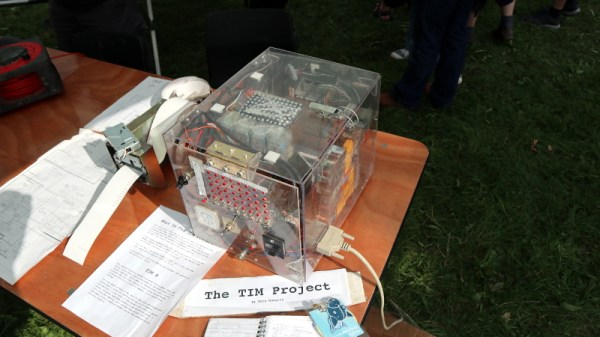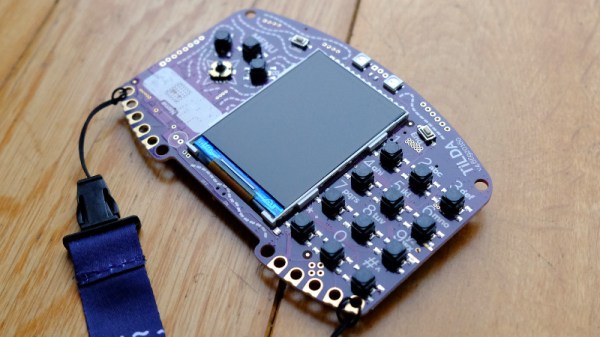It is a golden rule of the journalist’s art, that we report the news, we don’t make it. But just occasionally we find ourselves in the odd position of being in the right place such that one of our throwaway comments or actions has the unintended consequence of seeding a story. This is one of those moments, so it’s a rare case of use of the first person in a daily piece as your scribe instead of Hackaday’s usual second person.
At the SHA2017 hacker camp in the Netherlands, [Matt “Gasman” Westcott] gave his presentation on composing a chiptune from an audience suggestion. Afterwards my Tweet about never having seen a Sinclair Spectrum as large as the one on the presentation screen grew a life of its own and became the idea for a project, which in turn at Electromagnetic Field 2018 was exhibited as a giant-sized fully working Sinclair ZX Spectrum.
Since much of the work was performed in Oxford Hackspace I saw Matt’s progression, his first experiments with foam rubber keys, then as he refined his two-wire switch mechanism. Early experiments hooking a row of them up to a real Spectrum motherboard weren’t the success he’d hoped for, so he moved to the FUSE emulator on a Raspberry Pi. A huge effort and needlework learning curve plus a lot of help from OxHack’s textile specialists and buying his local furniture store’s entire stock of foam allowed him to perfect a facsimile of the classic Spectrum’s case and blue rubber keys, while its lettering and iconic BASIC keywords were vinyl-cut at rLab in Reading. A Milton Keynes Makerspace member provided transport to the camp where it was united with a huge TV in a gazebo, completing the trio of local spaces.
At the camp, though it suffered a few technical hitches along the way it was rather a success. There were two techniques, kneeling down and pressing keys with the palm of your hand, or dancing on them in socked feet for complex manoeuvres. The trademark single-key-press BASIC keywords took a little while to re-learn though, there was a time when those were instinctive.
We’d normally wrap a piece like this one up with a link or two. To other projects perhaps, or other hacks from the same person. But in this case we have neither another home computer on this scale, nor any hacks from [Matt], as he’s well known in the European arm of our community for something completely different. As [Gasman] he’s a chiptune artist par excellence, as you can see if you watch his set from the 2014 Electromagnetic Field.



















